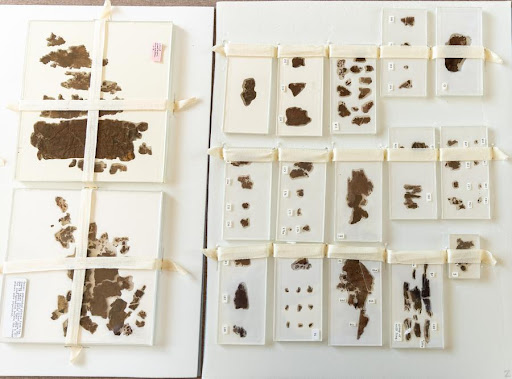WNAM REPORT: In the predawn hours of Sunday, a commercial flight from Washington D.C. touched down in Beijing carrying an extraordinary cultural payload — a collection of ancient Chinese silk manuscript fragments, dating back to the Warring States period (475-221 BC).
Unknown to most passengers, their journey coincided with one of China’s most significant cultural repatriations to date.
Returned by the Smithsonian’s National Museum of Asian Art on Friday, the fragments are from “Wuxing Ling” and “Gongshou Zhan,” the latter two volumes of the Zidanku Silk Manuscripts. Time has been kind to the first volume, which remains largely intact, albeit outside China.
Collectively, the silk manuscripts, containing more than 900 Chinese characters, are the earliest examples of silk text discovered to date and the oldest classical Chinese book in the true sense.
“Wuxing Ling” consists of lunar month illustrations paired with explanatory texts, recording seasonal taboos and auspicious practices throughout the year.
“Gongshou Zhan” features texts arranged in a rare circular formation that are read clockwise, indicating the favorable and unfavorable directions, dates, and timing for attacking and defending cities.
The Zidanku Silk Manuscripts predate the renowned “Dead Sea Scrolls” by over a century. These extraordinary texts provide a window into ancient Chinese cosmology, temporal philosophy, and interpretations of human existence.
The documents hold pivotal significance for the study of ancient Chinese characters and literature, as well as Chinese academic and ideological history, said professor Li Ling from Peking University, who has spent over 40 years tracing the manuscripts’ provenance.
Tomb raiders stole the silk manuscripts from a Chu-state tomb at the Zidanku site in Changsha, Hunan Province, in 1942. Four years later, the silk manuscripts were smuggled out of China.
The return of these manuscripts has been a source of inspiration for many Chinese. “Welcome home, national treasures. I hope more cultural relics lost overseas can be repatriated soon,” commented a user on Chinese social media platform Weibo.
The repatriation was facilitated, among other factors, by an intergovernmental Memorandum of Understanding (MoU) between China and the United States, which imposes import restrictions on Chinese archaeological materials and cultural artifacts. First signed in January 2009 and renewed in 2014 and 2019, the MoU was most recently extended for another five years beginning Jan. 14, 2024.
The MoU covers classified archaeological materials from the Paleolithic period through the end of the Tang Dynasty (618-907), as well as monumental sculptures and wall art over 250 years old. Between 2009 and 2023, it helped facilitated the return of 504 items or sets of Chinese artifacts from the United States.
Nevertheless, the repatriation of cultural artifacts displaced throughout history that fall outside the scope of applicable international conventions remains a challenge in cultural heritage governance.
After assembling a robust chain of evidence regarding the Zidanku Silk Manuscripts, China formally issued a memorandum to the Smithsonian Institution demanding the return of the “Wuxing Ling” and “Gongshou Zhan” on April 30, 2024.
Following extensive consultations based on dialogue and cooperation, supported by thorough tracing research, the National Museum of Asian Art has agreed to return the cultural treasures to China.
As the morning sun rose, “Wuxing Ling” and “Gongshou Zhan” were back home and on their way to the National Cultural Heritage Administration (NCHA)’s repository.
They will be shown at the National Museum of China in July, alongside other repatriated cultural artifacts.
Remarkably, 2,310 items or sets of lost Chinese cultural relics have been repatriated since 2012, the year of the 18th National Congress of the Communist Party of China.
A senior NCHA official noted that the administration will continue to work toward the early return of Sishi Ling, the first volume of the Zidanku Silk Manuscripts.








